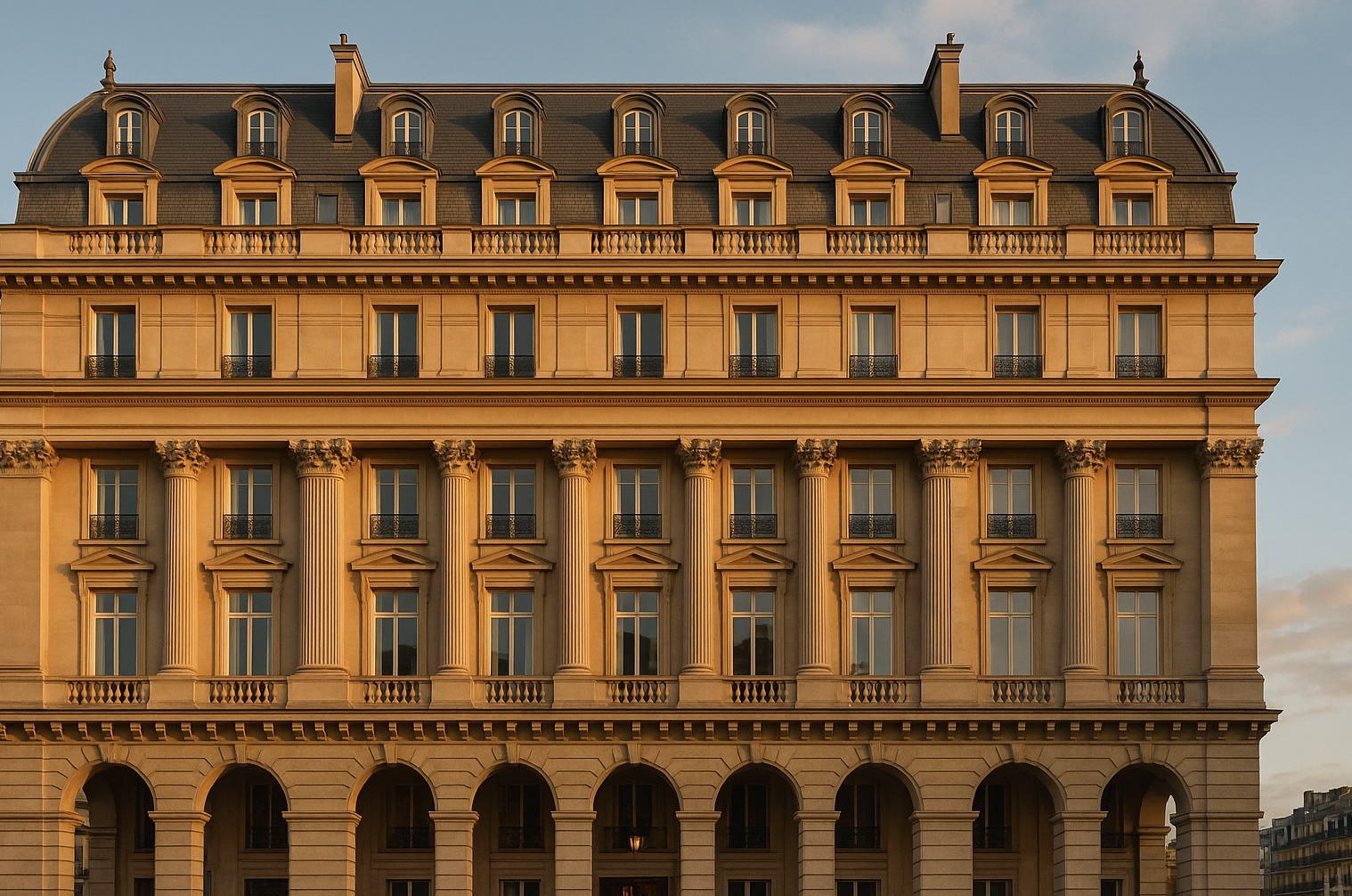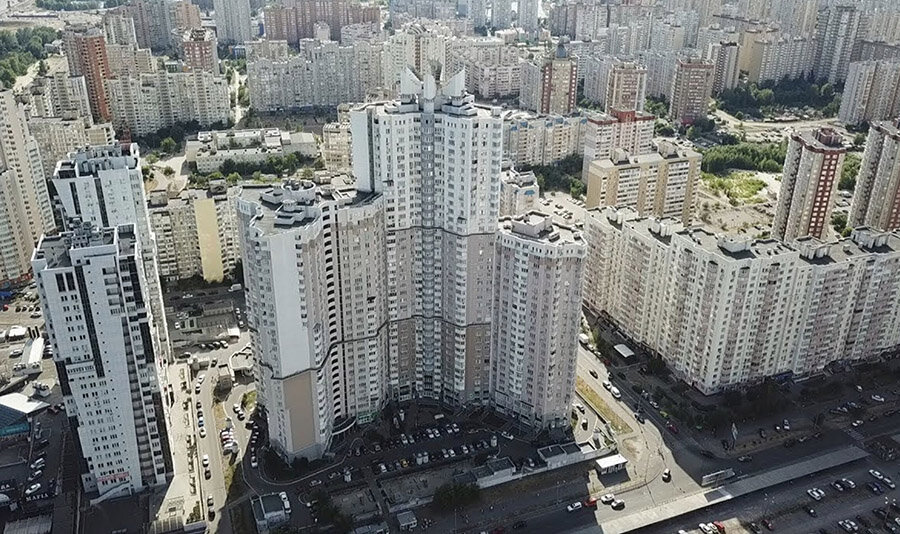читайте также
 Spain’s Real Estate: Record Prices and Falling Yields
Spain’s Real Estate: Record Prices and Falling Yields
 Fuel crisis at Seattle Airport: the Olympic Pipeline outage has disrupted supplies
Fuel crisis at Seattle Airport: the Olympic Pipeline outage has disrupted supplies
 European Hotel Construction Market Breaks Records: Upper Upscale Segment Reaches New Heights
European Hotel Construction Market Breaks Records: Upper Upscale Segment Reaches New Heights
 Middle East Hotel Construction Pipeline Hits Record High: 659 Projects and 163,816 Rooms Under Development
Middle East Hotel Construction Pipeline Hits Record High: 659 Projects and 163,816 Rooms Under Development
 New Rules for Greece’s Golden Visa: What Changes for Investors
New Rules for Greece’s Golden Visa: What Changes for Investors
 Holiday Travel 2025: Less Spending, More Generational Shifts — Deloitte’s New Forecast
Holiday Travel 2025: Less Spending, More Generational Shifts — Deloitte’s New Forecast
Ukraine’s Real Estate Market in 2025: From Growth to Stagnation

Photo: Stranaua.media
By mid-2025, Ukraine’s real estate market is experiencing a noticeable decline following a brief period of booming growth. Demand is falling, prices are adjusting, and sellers are increasingly willing to offer significant discounts, reports Strana.ua.
Turning Point in Market Sentiment
Analysts attribute the market’s revival at the beginning of the year to several factors: pent-up demand after the temporary suspension of the Ministry of Justice’s registries, political expectations surrounding Donald Trump’s election, and widespread belief in an imminent end to hostilities. These factors boosted interest in property, especially from internally displaced persons, allowing sellers to raise prices by 7–10%, and in some cases, even more significantly.
However, by summer, the situation began to change. Intensified shelling in Kyiv and other cities affected buyer behavior. In June, real estate agents recorded a wave of viewing cancellations, postponed deposits, and transactions deferred until autumn. Kyiv’s market proved particularly sensitive: more properties appeared with discounts, especially in the affordable housing segment. One-bedroom apartments in Kyiv can now be found for $14,000–18,000, significantly lower than previous prices of $45,000–80,000. Meanwhile, units in new residential complexes with autonomous systems and shelters continue to enjoy stable demand.
Rental Demand and Regional Contrasts
A similar situation is unfolding in the rental market. In areas frequently subjected to shelling, rental rates have fallen by 1,000–5,000 UAH. However, housing in buildings with underground parking and shelters, particularly in relatively safe neighborhoods, remains in demand, with tenants willing to pay more for a sense of security.
Conditions vary across Ukraine’s regions. In Ternopil, once popular among internally displaced people, market activity has dropped noticeably. In new developments on the city’s outskirts, the price per square meter has decreased from $700–750 to $600. Markets in Zaporizhzhia and Kryvyi Rih are also cooling: apartments are increasingly listed for $4,000–8,000. In Zaporizhzhia itself, supply has shrunk by nearly a third over six months.
Kharkiv remains an exception. There, demand is partly supported by the military and people relocating from even more dangerous areas. However, affordable options are dwindling, and price growth is driven more by a shortage of listings than real appreciation. One-bedroom apartments previously priced up to $15,000 are now listed at $18,000–20,000. Nevertheless, renewed shelling could once again reverse this trend downward.
Pockets of Growth and Changing Preferences
Amid the overall market cooling, the real estate sector in Rivne stands out. Over the past six months, prices have increased by 10–17% in older housing stock and by 8% in new developments. The average cost of a one-bedroom apartment has reached $50,000. Experts attribute this growth to the city’s relative safety, an influx of displaced persons, and business relocations from eastern regions.
In Odesa, demand for housing continues to grow even as supply diminishes. Over the past year, prices have risen by 24%, and in neighboring Chornomorsk by 11%. Lviv, however, tells a different story: the market is overheated, investor interest has faded, and prices have remained virtually unchanged over the past year. One-bedroom apartments have increased only 3% to an average of $64,900.
Market Outlook
According to the National Bank of Ukraine’s inflation report, the number of real estate transactions increased by 8% over the year, but two-thirds of these deals occurred in smaller towns. The most in-demand properties remain apartments up to 48 square meters and houses up to 70 square meters. However, the NBU emphasizes that without stabilization in the security situation, further demand growth is impossible. The introduction of insurance mechanisms for mortgage transactions is also necessary. If conditions do not improve, a continued slowdown in market activity may follow, leading to further price corrections. Evidence of this trend is already visible in the growing number of discounted listings.
In Kyiv, under a favorable scenario, prices for new residential properties could increase by 5–15% by the end of the year. Factors influencing this include inflation, rising construction costs, and limited supply, as noted by experts from Mayak Kyiv. According to Integra-Dom, if the economic situation remains stable, prices in large cities could rise by 5–7%, and by up to 10% in western regions. Buyers will increasingly prefer energy-efficient new developments with autonomous systems and shelters, perceived as the safest option in an unstable environment. In the long run, Ukrainian real estate is expected to retain its investment appeal. However, realizing this potential will depend directly on a stabilized security situation.
See also:
Ukrainians in Belarus: Entry Statistics and Legal Status
Poland Took in Millions of Ukrainians—but Only 40,000 Were Granted Citizenship
Temporary Protection for Ukrainian Refugees: Tighter Rules and Record-Low New Decisions
Life and Costs in Europe in 2025: A Detailed Guide
Global Real Estate Trends and Changing Behavior of the Ultra-Wealthy: Wealth Report 2025 Analysis





